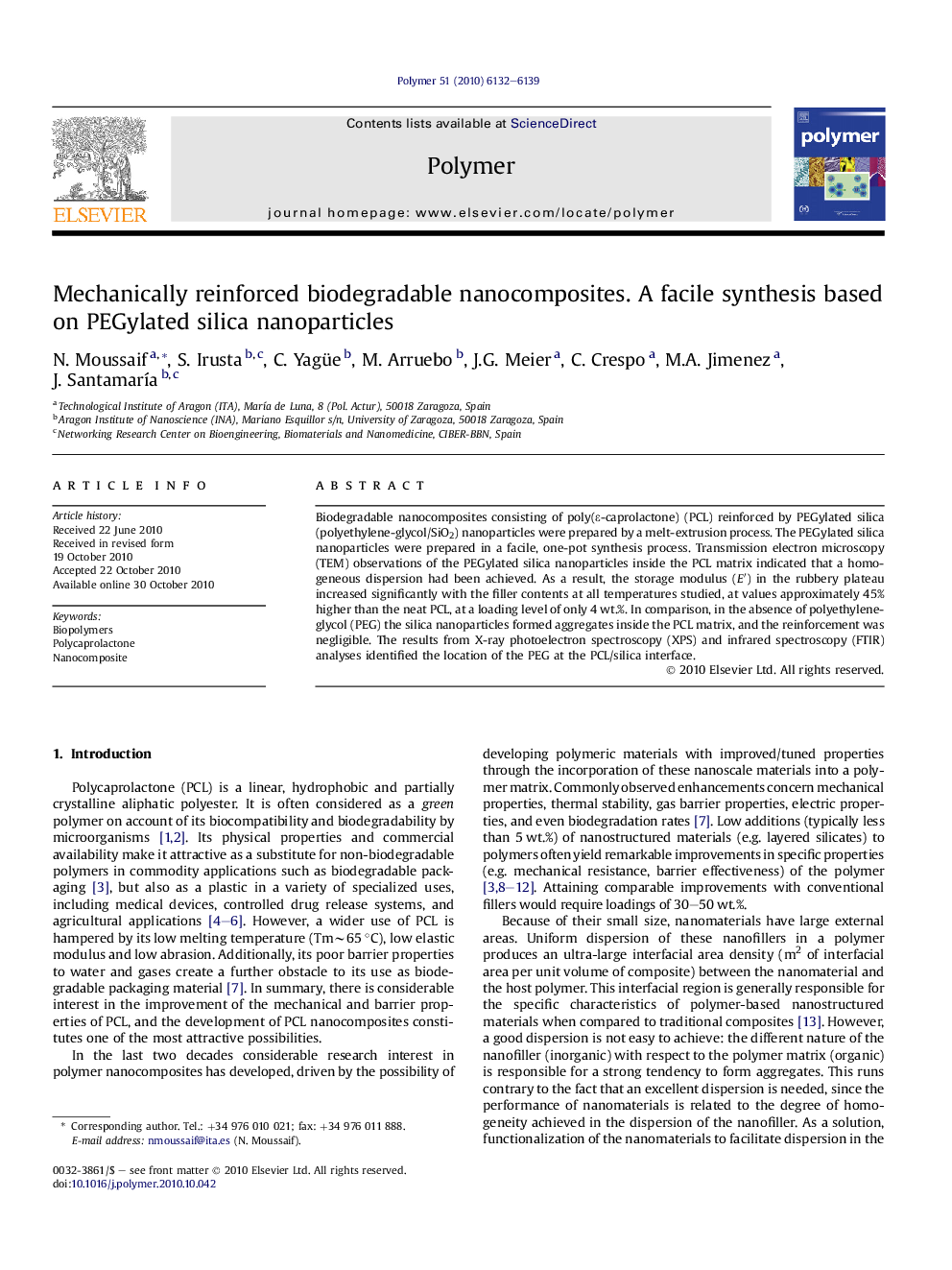| Article ID | Journal | Published Year | Pages | File Type |
|---|---|---|---|---|
| 5183387 | Polymer | 2010 | 8 Pages |
Biodegradable nanocomposites consisting of poly(É-caprolactone) (PCL) reinforced by PEGylated silica (polyethylene-glycol/SiO2) nanoparticles were prepared by a melt-extrusion process. The PEGylated silica nanoparticles were prepared in a facile, one-pot synthesis process. Transmission electron microscopy (TEM) observations of the PEGylated silica nanoparticles inside the PCL matrix indicated that a homogeneous dispersion had been achieved. As a result, the storage modulus (Eâ²) in the rubbery plateau increased significantly with the filler contents at all temperatures studied, at values approximately 45% higher than the neat PCL, at a loading level of only 4Â wt.%. In comparison, in the absence of polyethylene-glycol (PEG) the silica nanoparticles formed aggregates inside the PCL matrix, and the reinforcement was negligible. The results from X-ray photoelectron spectroscopy (XPS) and infrared spectroscopy (FTIR) analyses identified the location of the PEG at the PCL/silica interface.
Graphical abstractDownload full-size image
